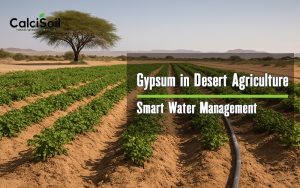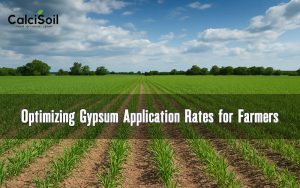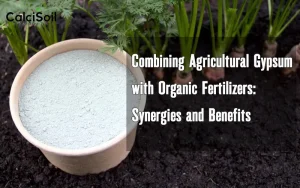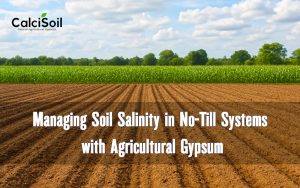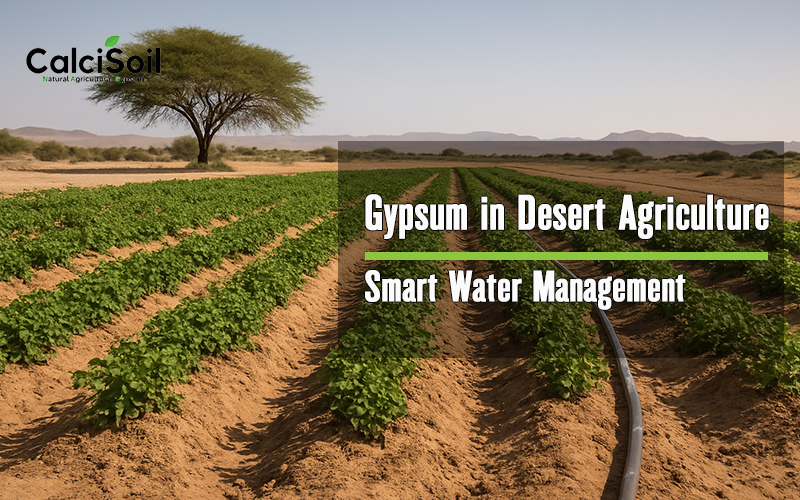
Gypsum in Desert Agriculture: Challenge of Water Scarcity
Water scarcity is one of the greatest challenges facing desert agriculture today. Farmers in arid regions such as the UAE, Egypt, and Saudi Arabia must grow crops with limited and often saline water supplies. Sandy soils, which dominate desert landscapes, have poor water-holding capacity and tend to lose moisture rapidly through percolation and evaporation.
This makes efficient use of every drop of water essential for productivity and sustainability. Fortunately, agricultural gypsum—a naturally occurring mineral rich in calcium and sulfur—has emerged as an effective tool for improving water-use efficiency in such extreme environments.
How Gypsum Works in Desert Soils
Gypsum fertilizer (calcium sulfate dihydrate) plays a critical role in improving soil structure, especially in sandy or saline conditions. When applied to soil, the calcium in gypsum helps flocculate clay particles, creating larger soil aggregates. This process enhances porosity and water infiltration while preventing crusting on the soil surface. As a result, water moves more evenly through the soil profile and is retained longer in the root zone—exactly where plants need it most.
Moreover, gypsum helps leach excess sodium from the soil, which is common in desert irrigation systems. By displacing sodium ions and replacing them with calcium, gypsum reduces soil salinity and improves root permeability. Healthier roots mean plants can access more water and nutrients, even under limited irrigation.
Reducing Water Loss and Evaporation
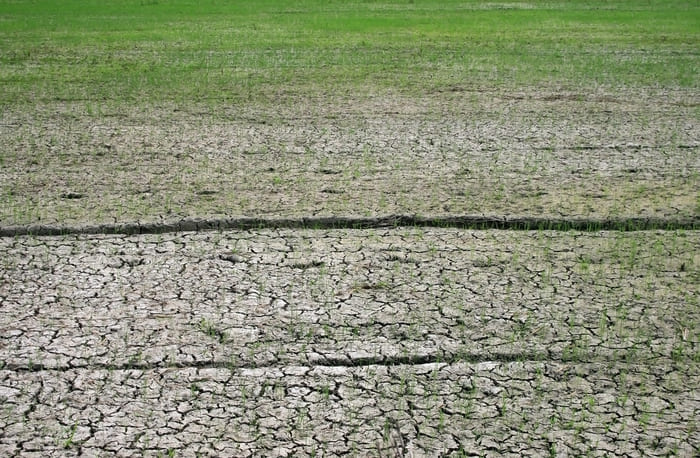
One of the less obvious but equally important effects of gypsum is its ability to minimize water loss through evaporation. In untreated desert soils, the surface often seals after irrigation, trapping water below and encouraging rapid evaporation under high temperatures. Gypsum application prevents this surface sealing, allowing for better capillary movement of water and air. The result is a more balanced moisture level that lasts longer between irrigation cycles, helping farmers save significant amounts of water over time.
Enhancing Irrigation Efficiency
In regions where drip or sprinkler systems are used, gypsum acts as a natural companion to modern irrigation technologies. Its improved soil structure allows uniform water distribution, preventing over-saturation in some areas and dryness in others. In drip systems, for example, water spreads more evenly from emitters, reaching roots more effectively. Studies conducted in arid farms of Egypt have shown that fields treated with agricultural gypsum required up to 20–30% less irrigation water to achieve similar or better yields compared to untreated plots.
Impact on Crop Performance
The improvement in soil structure and reduced salinity directly translate into healthier crops. Plants grown in gypsum-treated soils exhibit stronger root systems, greater drought tolerance, and higher nutrient uptake. Crops such as wheat, maize, alfalfa, and date palms—common in desert regions—show remarkable responses. Farmers often notice greener foliage, faster recovery after irrigation, and better yield uniformity. Additionally, the sulfur component in gypsum supports protein formation and enhances overall plant vigor, contributing to higher crop quality.
Application Recommendations
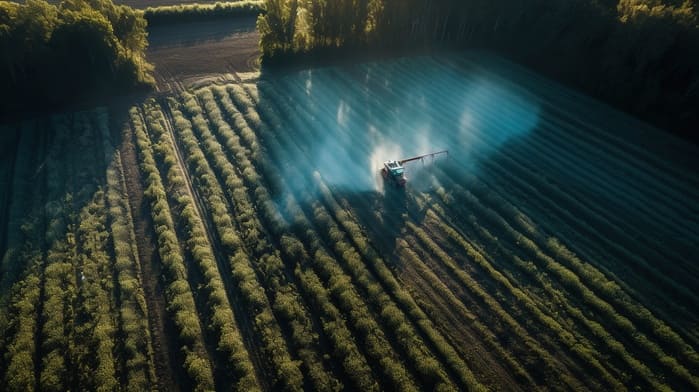
The right gypsum application rate depends on the soil type, salinity level, and irrigation quality. In sandy soils, lower doses (0.5–1 ton per acre) applied annually are often sufficient to maintain soil health and water efficiency. For saline or sodic soils, higher rates (2–4 tons per acre) may be necessary to reclaim the land initially. It’s best to apply gypsum before irrigation or rainfall so that water can carry calcium deeper into the soil profile. For best results, farmers should base application rates on soil test results rather than estimates.
Long-Term Benefits and Sustainability
Gypsum is not a quick fix—it’s an investment in long-term soil health. Over multiple seasons, consistent application enhances soil resilience to drought, improves infiltration rates, and reduces dependency on frequent irrigation. It also prevents salt buildup, which can otherwise degrade soil productivity over time. By integrating gypsum into their soil management plans, farmers in arid and semi-arid regions can create more sustainable and water-efficient farming systems—essential for the future of desert agriculture.
Conclusion
In desert agriculture, every drop of water counts. By improving soil structure, reducing salinity, and enhancing root health, agricultural gypsum helps farmers make the most of their limited water resources. Whether in the sandy soils of the UAE or the saline farmlands of Egypt, gypsum fertilizer offers a science-backed, sustainable solution for growing more with less. When used correctly, it transforms challenging desert soils into productive and resilient farmland.

